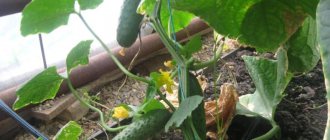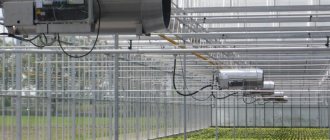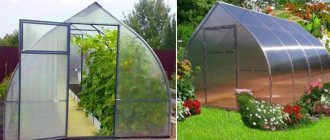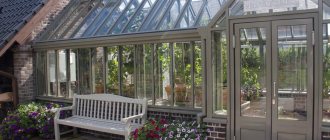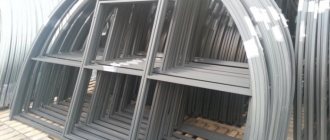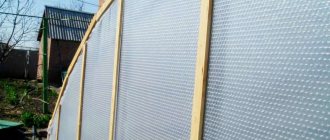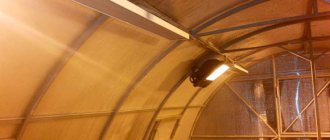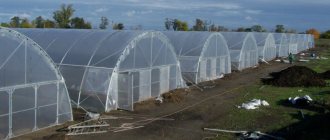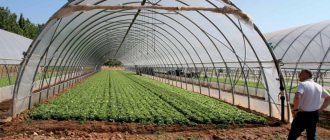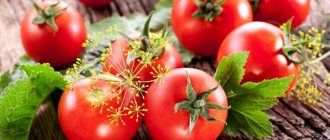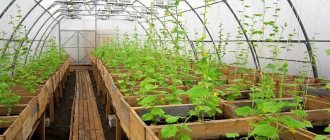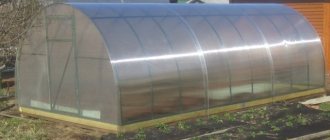Shading mesh is a lightweight, environmentally friendly material designed to protect from sunlight. It is no secret that global warming is making changes to the development of agriculture. In our country, every year, the average temperature in summer rises, the number of sunny days increases, therefore, the amount of ultraviolet radiation increases, which has a detrimental effect on agriculture and on humans in general. But a method of combating this phenomenon in the world has long been invented, and it is very effective! Shading mesh is very popular in Europe and all over the world, with the help of which you can solve a huge number of problems associated with ultraviolet radiation and more. This article will help you understand the types of grids and choose the right one for your purposes and needs. Let's figure out what a shading net is and what it is used with? The mesh is made from a synthetic, environmentally friendly material that can dissipate and absorb ultraviolet radiation, which is so abundant in sunlight. If you look at the structure of the mesh, it is essentially a single fiber, with many weaves that are evenly spaced from each other, with a large number of slots. The degree of shading of the grid directly depends on the number of these slots, we will call them cells. Shading mesh can be divided into areas of application: Mesh for camouflage purposes. It has a high density and will help you in camouflaging construction sites in order to hide construction debris, the unpleasant appearance of walls during repairs, scaffolding, etc. from prying eyes. It is also suitable for the construction of fences and canopies, since it has a lower degree of enlightenment.
Why do you need shade mesh for greenhouses?
This is a useful agrotechnical measure, especially relevant during a period of climate change, winters are becoming shorter, there is less snow, and summers are becoming drier every year, the sun is scorching. All these factors have a negative impact on fertile soil, and as a result, on the future harvest.
To preserve the ripening of crops and fruits, an innovative breakthrough is used to solve the problem - shading nets have been invented and are increasingly gaining popularity, helping to preserve plants and optimally grow berries, fruits and vegetables.
Purpose of grids
Manufacturers from Russia and foreign countries offer customers a huge range of nets designed to preserve crops.
- Products are made from synthetics in the form of a thread to which foil is added. The material is resistant to ultraviolet radiation and external negative factors.
- The color scheme is different, mostly the coatings are green, but they can also be gray, red, white and others.
They differ in the degree of protection from natural sunlight. The main difference is the size of the cells. If the cell is large, then the protection indicator is lower. Fine-mesh products more effectively protect plants from the sun. The degree of protection is in the range of 45-90%.
The protection works on the principle of partial reflection of sunlight and dispersion of direct rays to reduce thermal effects. This effect promotes optimal growth and uniform ripening of fruits.
Features of plastic varieties
One option is flexible polystyrene mesh. The following types of materials are most often used:
- geogrid;
- painting structures;
- fiberglass mesh.
PVC mesh Suitable as a support for supporting plants, flowers and other garden crops
Such products do not boast increased strength, but they are less susceptible to corrosion. With the right approach, plastic products serve their owners for three years or more. The features and advantages of this material are appreciated by many customers.
This mesh protects lawns from pest invasion if it is placed in the base. Excellent support for plants that can wrap around the base. If you choose cellular structures made of PVC, you don’t have to worry about the influence of ultraviolet rays, temperature changes, and moisture. Plastic nets are protected from them.
The range of plastic products remains large; you can choose a design with any appearance. Thanks to the softness of the material, even long strips can be easily rolled into rolls. This means that fences are installed with a reduced number of joints. Options with thick material and large cells are becoming especially popular. They will allow you to completely cover the bottom of the fence.
The material is excellent for temporary barriers. Performs a decorative function for any interior.
Main types of nets for greenhouses
Nets designed for shading vary in purpose of use, color and degree of protection. For example, there are products for greenhouse structures or canopies, for growing green biomass, tomatoes, cucumbers and other crops, for shading fences, arranging gazebos and canopies.
The coatings scatter the flow of sunlight and evenly illuminate the entire area of the greenhouse, due to which the fruits ripen simultaneously on all plantings planted in the greenhouses, increasing crop yields.
About the flowers
Typically, manufacturers do not offer a very wide range of colors for such products. But there is more than just boring gray. You can see other options and create entire compositions. Flowers and plants in this case will become indispensable helpers. Coloring allows the use of any shades.
It is permissible to create monolithic areas on which special photographs are placed. Polymer mesh fabrics with images on the surface will also become a real decoration for any area.
Classification of meshes for greenhouses
The purposes for using coatings are different. Shading nets are used, for example, to build fences to protect the area from prying eyes looking at the local area and planting vegetables and berries.
- The cell density varies, but preference is given to fine-mesh protective screens that harmonize well with metal and wooden fences.
- The purposes for using the products are varied - they cover gazebos and canopies, zoning the local area, decorates the facades of buildings or forests used during construction or repairs, they can be used to equip a house window to protect against mosquitoes, bees and other insects.
The coating also effectively protects the future harvest from birds, which is important, for example, for strawberries.
In greenhouses, nets are installed not only depending on the plantings being grown, but also on the installation method. Inside the greenhouse, an indicator of 45% is sufficient, and if the protection is installed outside the structure, then preference is given to an indicator in the range of 70-80% shading.
Main types of shading nets for greenhouses
The shading indicator is selected depending on the characteristics of the growing crops, taking into account the climatic zone of the region:
- For light-loving crops, the optimal indicator is 45%;
- In climate zones with extreme heat, as well as for growing tomatoes, cabbage and herbs, a shading level of 60% is recommended;
- External greenhouse cover – 70%;
- For a fence, hedge and car shelter, it is better to purchase a product with an 80% rating;
- The higher figure of 90% is not intended for plants, since there is practically no lighting, but it is well suited for arranging a gazebo.
The nets not only provide protection, but also decorate the local area.
Functions of shade nets for greenhouses
Protective coatings that regulate the ripening process of crops and increase productivity are new technologies in agricultural technology that change the spectrum of plant lighting.
And color in this case has not just an aesthetic, but a practical purpose, because thanks to it you can speed up the process of complete ripening of fruits and vegetables by 10-15 days, or slow it down if necessary.
In practice, scientists have found that exposure to waves of different colors makes it possible to regulate the basic functions of plant viability throughout the entire cycle.
Previously, in crop production, only control over lighting was exercised, depending on the names and characteristics of the crops. Now the wavelength of the incoming light is also controlled and what effect it has on the growth of plantings, ripening time and fruit size.
- To speed up the flowering process of plants and the ripening of fruits, warm colors are used, especially red colors. And to delay the process, dark colors are selected: black, blue, etc.
- At the same time, different coating colors are used for certain types of plants. For example, for apples and peaches, red shades will be the most acceptable, affecting the size of the fruit and its sweetness. And for a salad, an excellent option would be a gray or blue color scheme, which significantly increases the green mass.
- The yield in a greenhouse structure will improve if optimal light levels and temperature control are provided inside the greenhouse.
- To achieve these goals, thermal screens are used to increase the temperature at night and prevent it from increasing during the daytime and hot weather. Such products increase the amount of scattered light and improve plant photosynthesis.
Pragmatic and experienced gardeners cover their plantings with shading nets, protecting the plantings not only from the sun, but also from winds, frosts, hail and other unfavorable external conditions.
Also, a positive aspect of using a mesh is the reduction in the consumption of moisture intended for irrigation and savings in terms of purchasing fertilizers.
About varieties
Weaving or welding are the main technologies used during installation.
- Rabitz.
The most famous type of wickerwork. Galvanized wire with a round cross-section is the main manufacturing material for such products. The size of the cells and the thickness of the wire are the main differences between the different types. You cannot do without periodic touch-ups if the base is black steel mesh. In the case of galvanized products, painting can be omitted.
- Twisted mesh for fence.
These products are rarely found in the case of fences. In this case, the wire is twisted at a certain angle, resulting in hexagonal-shaped cells.
- Channeled or corrugated mesh.
It is implemented in the form of so-called karts. The composition of the raw materials means that the products cannot boast of particular flexibility. The main material used in production is carbon steel, black. The wire is bent using a special technique before weaving begins. In this case, the strength will be maximum.
A chain-link fence is well suited for installation between adjacent areas. Twisted mesh is used to reinforce heat-insulating mats for caged fur farming (fencing small pens for animals and birds) Corrugated mesh
- Made from galvanized steel wire, which helps provide excellent protection from destructive processes inside.
4 millimeters is the smallest wire thickness. The maximum figure is three times more. Products with the highest strength are created based on reinforcing mesh. Spot welding is a technology that helps to fasten the joints of rods that intersect perpendicularly. Square and rectangle are the most common cell shapes.
- Expanded mesh.
Made from a whole steel sheet. Cutting and drawing of steel is performed using special equipment. The standard cell shape in this case is a rhombus. The thickness of the material and the width of the cutting determine how rigid the product will be. If possible, it will provide strength and stability for several years.
- Gabion.
It has the form of cylindrical, rectangular boxes made of cells of different types. The internal filling is selected by customers to their taste. Stone and wood cuts are the best choice.
- Plastic fences.
- Woven products.
Expanded metal mesh Gabion mesh Plastic fence copes well with excess moisture without succumbing to corrosion
Effect of shade grid color
Each mesh color has its own functional purpose:
- Red. This warm color accelerates the process of growth of the upper part of the plantings, plants bloom faster, and fruits ripen earlier. Productivity not only increases, the fruits themselves increase in size. During the experiments, it was under the cover of red shades that the plantings grew taller with a good harvest.
- Blue. This shade retards growth, providing optimal control of crop ripening if market needs and customer demand require it. In addition, this color scheme increases the green biomass of dill, celery, lettuce, etc.
- Grey colour. Popular colors for coatings. It not only diffuses sunlight well and effectively protects against cold weather, but also expands the surface area of the leaves, and also helps the main trunk of the planting to branch out further.
- Pearlescent shade. An aesthetically pleasing color that has a positive effect on how the crop develops and grows, and also helps the development of additional branches and influences the increase in fruit size.
Experienced gardeners, with the help of scientists, have noticed that if the same vegetables are planted at the same time in greenhouses covered with nets of different colors, then it is possible to regulate the growth rate, the timing of full ripening and the yield of vegetables, berries, fruits and herbs.
Hardware
They are distinguished by wear resistance and relatively inexpensive prices. Suitable for dividing an area into several zones and providing additional protection. Every year more and more original products with an unusual appearance are produced. Simple manufacturing and durability are among the main advantages that influence the decision of how to close the fence.
This type of chain link can last up to five years. Wire will be an excellent solution if there are no excessive requirements for strength. They create beautiful compositions with vines and climbing flowers. You can get a variety of options.
Corrosion means that the service life of the simplest products is no more than three years. When using polymer coatings, the effect is better, but the cost also increases. In this case, performance characteristics will also be better. The use of needles of artificial origin is also acceptable.
Based on their properties, galvanized mesh is the best choice. Such fences last at least 10 years. In this case, the base is made of corrugated or twisted steel rods. Thanks to this, the product acquires a unique three-dimensional volume.
Welded mesh fence requires no maintenance and is quick to install
The popularity of welded structures also has its reasons:
- affordable prices;
- easy installation;
- ability to maintain shape, protection from sagging.
Products in this group do not require additional painting. Fencing options are especially convenient when the manufacturer covers the surface of the products with polymers. Baking technology is used. Before purchasing, you need to make sure that the surface is free of cracks.
Welded meshes with three-dimensional effects also have an original appearance. Only materials with additional galvanization will last a long time. In this case, the chain-link fence is protected from negative influences.
Selecting Shading Grids
The range of light protection nets is quite extensive, therefore, in order not to make a mistake in your choice, be guided by the functions of the coatings and the main directions of their classification.
Nets are used in large greenhouse structures, as well as in small greenhouses. Moreover, the material used to make the greenhouse itself can be absolutely anything.
- The value of the shading mesh is also its ability to retain 15-20% of heat in case of temperature changes, especially at night. This valuable function is provided due to the fact that the product reflects heat flows.
- If you need to reduce the temperature inside a greenhouse structure, it is better to use the mesh in combination with a device that artificially creates fog and provides internal ventilation in the greenhouse.
It should also be noted that the warranty period that manufacturers provide for their products is quite long, averaging 3 seasons.
To ensure that shade nets last for many years, they should be removed after the crop is harvested. Products tolerate winter well if they are stored in a utility room and are not exposed to wind, snow and other natural phenomena.
Advantages and disadvantages of the material
Thin threads of metal wire with a diameter of 0.03 mm-3.0 mm are used to produce the shading mesh.
The following advantages are typical for meshes in any version:
- A large number of color solutions.
- Light weight. The installation of such nets can be easily handled by site owners without outside help.
- Strength, stability. The service life is up to 15 years, even in the case of constant negative environmental impact.
- Easy connection to supports.
- Average ability to transmit light.
Among the disadvantages, there is some mobility of such fences when they are exposed to wind.
But the windage effect is reduced if you try to secure the structure in several places. Sometimes the appearance leaves much to be desired. Therefore, most often such products are chosen for summer cottages, where the advantages of a chain-link fence are fully manifested.
Installation of shading mesh
Before stretching the mesh, you need to decide on the method, material used and the required amount of coating.
The sun protection product is secured using supports and clips. The pulling process itself is not complicated; one person can do it, especially since the product is very light in weight.
If there are no fastenings, they can be easily replaced with wire or textile ties.
- There is no need to worry that the screen will break, because it is made of durable material. If, through carelessness, a small rupture occurs, then it is local and will not go further along the entire length.
- When installing the mesh, secure the wooden or metal supports well so that they do not damage the plantings if they fall. The mesh itself is light in weight and does not cause any harm if it falls on vegetation.
The outer mesh for the greenhouse is stretched on the roof of the structure, on top of the main covering (instructions are included with the product). Fastening is done with clips, which can be either disposable or reusable. After installing the individual canvases, they are stitched together.
Woven products
Available in roll form, they are lightweight. In production, the main components are thin strands of metal wire. Their diameter is 0.03-3.0 mm. Fastenings located perpendicularly are created on the walls. There are several GOSTs that control the overall quality of mesh fabrics. But you can also assemble the products yourself.
The most commonly used types of wire are tinned and galvanized. Some large size products do not have coatings. Galvanized options can protect against corrosion. The canvases are supplied with smooth or corrugated varieties of coatings. There is a direct proportional relationship between the strength and diameter of metal threads. Strength is proportional to cell dimensions inversely.
The type of surface and the initial amount of carbon also affect the final quality of the products. Corrugated varieties are distinguished by their rigidity.
Reviews from gardeners about shading mesh
Agricultural technicians and experienced gardening enthusiasts highlight the following advantages of shading nets:
- Long service life of about 6-7 years;
- Wide area for application (outside and inside greenhouses, canopies, gazebos, fences);
- The ability to regulate the timing of plant ripening, increased yield, large fruits, large biomass of greenery;
- Improvement of vegetative growth processes;
- Effective protection from the negative influence of the external environment (sun, frost, hail, wind, birds, insects, etc.);
- The coating has a density in the range of 15-85%, which makes it possible to adjust the level of shading;
- A light weight;
- Easy installation;
- Large selection of colors;
- Strength of the material;
- The coating is not subject to corrosion, does not rot, and does not emit toxic fumes;
- The covering does not need to be removed for the winter, since it is not afraid of moisture, and the covered area is freed from snow.
Among the disadvantages is the price of the product, but if you calculate it by seasons of long-term operation, then the amount per year is not expensive.
The shading net not only protects gardening products from the sweltering scorching rays of the sun. The covering is multifunctional, it decorates the site and simplifies the process of growing plants.
The innovative method makes it possible to achieve high crop yields and has already proven itself not only in greenhouses, but also in small greenhouses, as well as industrial greenhouses with large-sized structures.
Rubric “Question-answer”
With us you will always be sure of the accuracy of the footage, neat packaging and dispatch on the day of the order; wholesale customers are provided with pleasant discounts. Our customers have been with us for more than 8 years and regularly participate in drawings for useful prizes in everyday life and in the garden.
“Sad-Ogorod” presents its customers with a product with an ideal price-quality ratio. The product is manufactured in Hungary and is distinguished by the presence of ultraviolet (UV) radiation additives in its composition. Turkish and Chinese mesh without a UV stabilizer is not able to last more than 6-9 months in active sun, as a result, its structure quickly dries out and collapses.
Of course, there are mesh made in Italy and Greece, but their price is 2-3 times higher than the cost of the Hungarian one, and there are no holes for pulling cable, rope (twine) or wire.
The photo shows what an 85% mesh looks like with a stretched cable/twine/wire:
Hungarian mesh is available with reinforced edges. This solution is another “plus” to the durability of the material, because during long-term use and when stretched, you can be sure that the mesh will not unravel or tear.
Layout of reinforced mesh edges:
2. How long does your mesh last?
The entire range of shading nets on our website contains a solar stabilizer. Thanks to this, our mesh will last you an average of 7-9 years.
For reliable fixation, we recommend that you thread a cable, polypropylene twine or wire into each hole along the edges. This is extremely important so that the net cannot be torn off even by the strongest wind. For the winter, it is better to remove the mesh so that it is not damaged by a fallen dry branch or stretched by snow.
On our website you can buy twine and steel cable of the required length: cable 20 m or 200 m long, twine (greenhouse thread) 500/1000/1400 m in a reel.
This is how, thanks to the presence of holes for fastening, we made 85% of the shading mesh into a kind of curtain for the gazebo:
4. If I slightly miscalculated the footage, will the mesh stretch?
Certainly. But at the same time, you should take into account: the greater the density and percentage of the shadow, the less it will stretch.
On our YouTube channel we conducted an experiment, stretching each grid to the maximum possible values.
For example, a mesh of 45% shade 1.5 m wide was stretched to 2 m, and a dense mesh for a fence 85% 1.5 m wide was stretched to 1.65 m, sacrificing a little length. In this case, you can get a little extra footage in case of unforeseen circumstances.
Link to 360 degree video on our YouTube channel:
